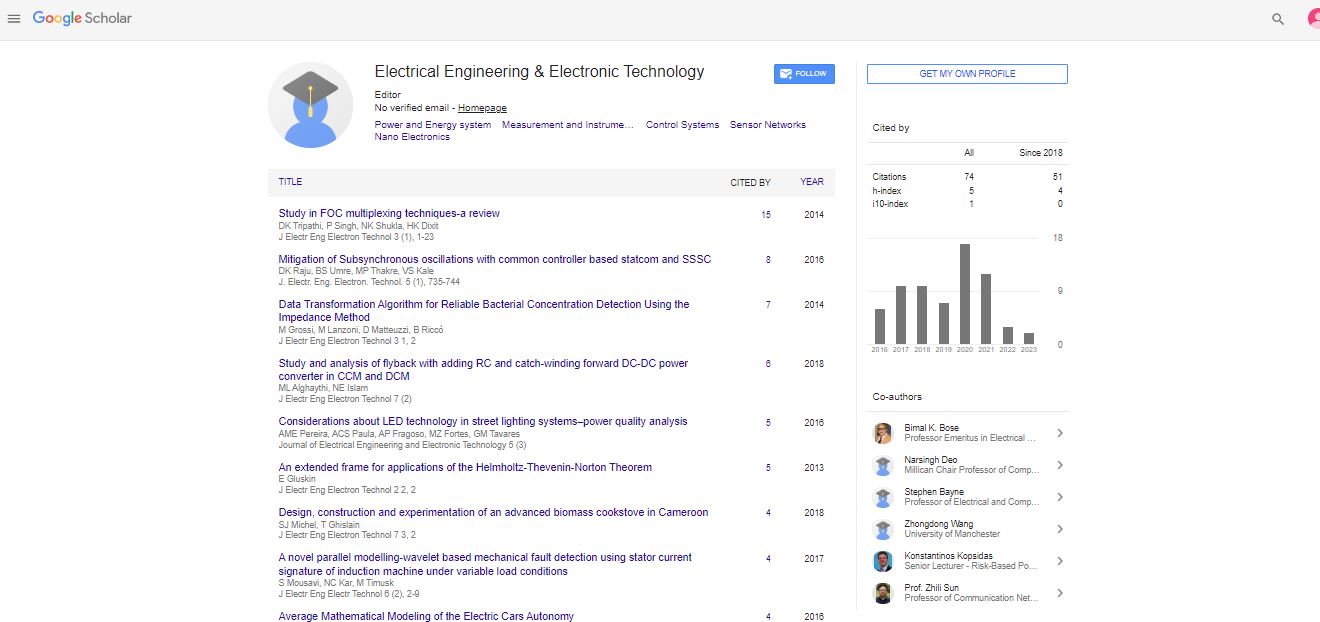The development of integrated capacitive array biosensors towards the selective and real-time detection of single bacterium
Laurent A Francis
Université Catholique de Louvain, Belgium
: J Electr Eng Electron Technol
Abstract
The rapid and selective detection of whole bacterial cells is of interest for the development of Point-of-Care (PoC) diagnosis tools and Lab-on-Chip (LoC) systems. Different types of transducers are promising to that end, including in particular capacitive biosensors. For them, we present here a three-step approach to investigate the AC impedance spectroscopy of interdigitated microelectrodes coated by an ultrathin passivation layer and operated in electrolytes with bacterial cells adherent to the surface. The first step is an accurate quantification of the device sensitivity helped by analytical models and two-dimensional simulations. The simulations are based on Poisson-Nernst-Planck equations and include the modeling of the sensor topology, the dielectric properties of multi-shell bacteria, the various ionic transports, and surface and space charges. The second step is to ensure the selectivity by involving lysostaphin for genus-specific bacterial detection. The sample matrix is then directly flown on the polydopamine-covered sensor surface without any pre-treatment. The third step is the integration of microelectrodes with a 0.25 µm CMOS process as the pixel element of a capacitive array. A capacitive-to-voltage conversion was designed below each pixel and the sensitivity is boosted by a subthreshold gain stage. The capacitive biosensor array performs dielectric measurement of the electrolytes and, as proof of concept, the real-time detection of Staphylococcus epidermidis binding events with a detection limit of about 5 bacteria per pixel. Pushing further the limits of the device will drive to small footprint and low power consumption capacitive array for the real-time detection of single bacterium.
Biography
Laurent A Francis received MS and PhD degrees from the Université Catholique de Louvain (UCL), Belgium, in 2001 and 2006, respectively. He is currently working as an Associate Professor at UCL. His research interests are related to co-integrated, ultra-low power CMOS MEMS sensors for biomedical applications and harsh environments. He was previously Researcher at IMEC in Leuven, Belgium, and a visiting Professor at the Université de Sherbrooke, Canada. He is author or co-author of more than 70 scientific articles, has co-edited one book and holds one patent. He is member of the Belgian National Committee on Biomedical Engineering and of the IEEE.
 Spanish
Spanish  Chinese
Chinese  Russian
Russian  German
German  French
French  Japanese
Japanese  Portuguese
Portuguese  Hindi
Hindi 
